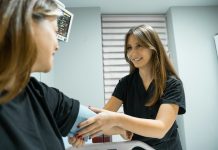
Do you know the Mona Lisa? It’s a famous painting by Leonardo da Vinci, and pretty much everyone knows her smile.
But did you know she might have had a disease called familial hypercholesterolemia (FH)?
If you look closely, you can see small lumps on her hands, which can be a sign of this disease.
What is Familial Hypercholesterolemia?
Familial hypercholesterolemia is a genetic disorder. It causes bad cholesterol to build up in the blood, and this can lead to heart disease.
It happens when a part of the body that usually clears cholesterol doesn’t work properly. According to the American Heart Association, about 1 in 200 adults has this problem.
People with high cholesterol often take medicines called statins. These medicines help to lower cholesterol levels.
However, they work differently in different people, and people with familial hypercholesterolemia may find that statins don’t work very well for them.
New Treatments on the Horizon
Researchers at the Medical University of South Carolina (MUSC) are looking for new treatments for this disease.
They recently published a report on a system they’ve developed to test potential new drugs. They’re looking for drugs that can reduce a certain protein that’s part of the bad cholesterol.
To do this, they tested about 130,000 different compounds. They found a group of molecules that helped to lower the bad cholesterol. This could be a new way to treat people with familial hypercholesterolemia.
The researchers explained that their approach is about finding drugs that can help, without knowing exactly how they work. They first identify drugs that seem to be effective, and then they figure out how they work.
They developed a system using human cells that act like liver cells.
They found a group of compounds that lowered the levels of the protein they were interested in. When they added these compounds to the cells, the bad cholesterol levels also went down.
However, when they tried these compounds in mice, they didn’t work. This surprised the researchers, but it shows that human cells and mouse cells can behave differently.
To get around this problem, they used special mice that have human liver cells. They found that the compounds worked in these mice.
This is an important step, because it means that the compounds could potentially work in humans.
The Road Ahead
This research is a big step towards finding new treatments for familial hypercholesterolemia. The new drugs they found could be used alongside statins to help lower cholesterol levels more effectively.
However, the researchers are not done yet. They still need to figure out how the new drugs work, and how they interact with statins.
They also need to test them in more complex systems to make sure they are safe and effective.
In the end, the researchers believe this work is an important example of personalized medicine. By using human cells to find and test new drugs, they can develop treatments that are more likely to work for individual patients.
This research could potentially help many people with familial hypercholesterolemia, and other diseases, live healthier lives.
If you care about wellness, please read studies about exercise that are vital to improving longevity in older people, and this dieting method could help increase longevity.
For more information about wellness, please see recent studies about vaccines that can block COVID-19 and variants, plus other coronaviruses, and results showing this type of exercise may slow down bone aging.
The study was published in Communications Biology.
Follow us on Twitter for more articles about this topic.
Copyright © 2023 Knowridge Science Report. All rights reserved.



